Kukua's nest: a continuous competition
For science, on the contrary, some of the characteristics of the quota have been unknown, while others have been replete with speculation, often due to the popular convictions mentioned. We will therefore see the nature of this bird so popular and, at the same time, little known.
Parasite nest

Every living being has to face reproduction to complete his life cycle and the complexity of his reproductive strategies in nature is enormous. One of the most surprising is the parasitic nest. Since Aristotle, 2,300 years ago, described the parasitic tendency of the quota, much research has been done on this subject and today the mechanism of this behavior is well known. However, the factors that have contributed to this strategy throughout the evolution, effectiveness and causes of this behavior are not sufficiently studied, presenting significant gaps from the point of view of evolutionary ecology.
The main problem of many beings are other living (predators, parasites, etc.) and have evolved to face them. The predator has also evolved, entering a continuous arms competition. Thus, many characteristics are a direct consequence of a coevolution, that is, adaptations that have developed to overcome the obstacles and difficulties that one group of beings, another, has put. It is in this context that we must situate the evolutionary confrontation that has had and has the cuckoo and its hoteliers. On the one hand, we have the strategies that the cuckoo has used to deceive the hotelier and, on the other, the adaptations that hoteliers have developed to deal with the fraud of the quota.

The kuku females leave the mimetic eggs (very similar in size, color and shape to that of the host) in the nest of some other species, and they are responsible for its elaboration. Although many people have considered that the only hotelier of the quota is the txantxangorri, in all Europe more than 100 hoteliers are known; in Euskal Herria, the most common hoteliers who suffer this blatant pardillo are: Txepetxa ( Troglodytes troglodytes), petirrojo ( Erithacus rubecula), carricero común ( Acrocephalus scirpaceus), carracín de carrichaca ( Acrocephalus arundinaceus), white pottery ( Motacilla alba), tatenálama ( Tochantus). The choice of hoteliers is not random; all are 2-3 times smaller than the cuckoo and are insectivorous. The measure of the guest, as we will see later, is related to the eggs of the cuba and of course the presence of insectivores with the feeding of the téxito de cuco.
In the selection of hoteliers, the development of chitaje is of vital importance. The cuckoo will always go to the nest after the guest's setting. But if the accommodation is in advance, it breaks the nest forcing the guest to build a new nest and lay more eggs. In fact, in the most advanced chites, the chicks of the host would be born before and at birth the cuckoo the others would be cleft; in this situation, the cuquecillo would not need food due to the competition of the nest.
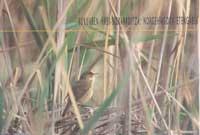
Therefore, the time of compassion of the quota is conditioned by the chitazo of the hoteliers. Small cucos are usually guarded, take care of hoteliers and often observe how they build the nest. If the hoteliers realize it, they attack the quota. The females of cuckoo take advantage of the absence of the nesting to spawn the egg, being able to perform this action in ten seconds. They are laid every two days, usually one egg per nest and 8 to 15 eggs each. Before depositing the egg in the guest's nest, they steal an egg from the guest, thus matching the nest.
This egg theft has generated false convictions. It has been thought that the cuckoo lays eggs near the guest's nest, takes them at the beak and leaves them inside the nest. This belief has been used to explain the parasites that occur in narrow or complicated entry nests. The cuckoo always performs directly on the nest of the guest and for this it has several adaptations: long and strong legs, to fasten and place the nest of the guest, the sewer is also elongated and the thick shell of the egg, in the closed nests where the cuckoo does not enter well, the eggs of upper setting do not break easily.

Each female kuku can only put a type of egg, so only the corresponding guest will have it. Accordingly, we will find different female lineages based on the shape and color of the eggs. In this way, a cuckoo female lays the eggs in the form of a host that raised it. For example, if a cuckoo is born in the nest of the txantxangorri, it will also lay eggs like the txantxangorri and will not be able to lay eggs in the nest of the txepetxea, as this would recognize it. Through experiments, although this is demonstrated, the genetic consequences of this phenomenon are not investigated.
It is believed that the genetic mechanism that conditions the characteristics of the eggs is only carried by the female, so the males do not produce changes in the characteristics of the egg at the crossing: there are different female lineages and the males guarantee the unity of the species.
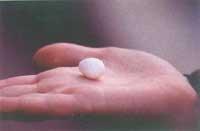
In general, hoteliers do not admit strange eggs in nests and expel those who are different from their eggs. This discrimination of hoteliers has been the evolutionary pressure that has driven mimetic eggs, since only those of aspect of the guest eggs can deceive the guest. In any case, this has not been the only reason, because the competition between cucos has also favored this mimetism. If a nest with cuckoo egg approaches a second cuckoo, the most profitable will be, of course, the expulsion of the egg from the cuckoo and not from the guest. The first success will be born from the egg of the first cuckoo, which will remove all the eggs you find.
Egg mimicry is based on two characteristics: color and size. In general, the color is usually very similar to the guest's egg, depending on the case, with his own painting. But mimicry does not occur in all cases. These exceptions can be very significant and we have a good example, the case of tuntun. The tuntún lays blue eggs and the cuckoo that parasites it is whitish. Therefore, if the mimetic egg has favored discrimination of hoteliers, how to explain this lack of mimetism?
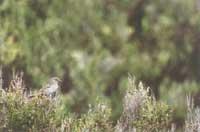
In different studies with tuntu (in the nest with eggs of different colors and shapes) it has been shown that tuntún admits all the eggs of any color and size. And no, the tuntu is not blind, but it seems that the tuntún is a new host of the cuckoo and that it still does not “learn” to reject the eggs. To confirm this, you can do another type of research: observe how they behave before the egg of the cuba, some txokos, although they are not the hoteliers of the quota. In fact, some birds that are not hostels show a greater degree of discrimination than the common hostel.
For example, the gray fly bird ("Muscicapa striata"), by putting the egg from the tank, separates it easily, and is not currently included in the guest list of the quota. Following the same criterion that we have used to explain the phenomenon of tuntun, we can say that the gray fly bird, in its day, was parasite of the cuckoo and that in the competition had exceeded the cuckoo.
The cuckoo egg is very small in relation to its body (proportionally three times smaller than that of the rest of birds), being somewhat greater than that of the guest. In this case there are also reasons for mimicry, but there are others: the cuckoo produces a large number of eggs (8-15), which is a considerable expense. Therefore, thanks to energy balances, the production of small eggs has increased its number. And the more eggs you lay, the more young, of course.
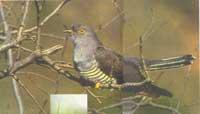
The kukukume will be born after the chitaje of 11-12 days, before the nesting (most hoteliers have a chitaje of 14-15 days) and will monopolize the attention and food of the parents. It seems that the incubation starts at the gift of the cube, and that is the reason why it was born earlier in the nest. This advance is of vital importance, since the cucachorro will have the opportunity to remove the eggs from the guest, thus eliminating competitors.
They are newborn chickens, silent and blind, but soon push the eggs next to them, putting them to the head, tightening the strong legs against the walls of the nest and putting the egg on the back, throw the egg from the nest. In 3-4 hours you will throw all the eggs. Many times parents are witnesses, but they do not make any gesture to avoid disaster. In some cases, the cucachorro, rather than eggs, is found in the nest with newborn chickens and in these cases drowns.
When he has become the owner of the nest, all the insects brought by the parents will be for him and in a few days will exceed his size. It becomes a unique spectacle, climbing the txepetxa on the head of the kukume and discovering how the food offers, proud of its alleged breeding.

At 4-5 weeks, the kid is approaching the next branches, with short flights, although they feed on the food that parents bring them. One or two weeks later he completely leaves the nest and begins to prepare the long journey to Africa, where he will ingest a lot of fat. For the second year they are able to reproduce cuckoos.
The mimicry of the eggs is very precise, while the kukukume does not resemble the milestones of the hoteliers. Why are they so cautious when it comes to accepting strange eggs and, on the contrary, are they willing to raise any chick, even though it is totally different and much bigger than them?
It could be thought that the guest separates the egg from the cuckoo, comparing it with his own, and with the chitos, he cannot do it because only the cuquero is. But this is not so, since it has been seen that mixed chites (the cuckoo and guest chitos) grow smoothly. Therefore, since there is no discrimination against the kid, natural selection has not driven mimetic success.
Although not all authors agree, it seems that the main cause of this lack of discrimination is the typical profitability of nature: the development of a mechanism of separation of foreign eggs by natural selection is advantageous, since the guest is in time to expel the egg and save the incubation; or as in other cases, abandon the nest and build a new to carry out the txitaldia. On the contrary, the development of mechanisms to learn to differentiate the cuckoo kid can serve for very little, since it is already late to start a new chitazo. Therefore, hoteliers do not incubate any eggs, but the first kid they see in front usually eat just in case.
Despite the risk of getting dizzy in the tunnel of time when analyzing evolution, it is often essential to immerse yourself in it, as some behaviors and adaptations can only be understood. And also, as we have seen, we don't have to go very far to analyze strange behaviors, because we have to investigate the causes of many behaviors that occur in our environment.
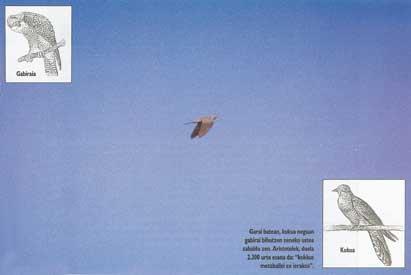
Kukua ID
The cuckoo ( Cuculus canorus) is like a modal pigeon. Very long tail of about 13-15 cm. Relatively small head and sharp wings. Adults usually have a gray-blue head, chest, and back. The belly is whitish, with brown and narrow transverse lines. Wings and tail are the darkest parts of the body, as they are almost black. The tail is decorated with white types. The male and female are very similar and occasionally very brown female loops can be found.
Juveniles are reddish or gray. When it flies it is very similar to the hawk ( Accipiter nisus). On the ground it has a clumsy march and when it sings changes the usual silhouette, since it lowers the head, closes the wings, lifts the tail and makes it very wide. The famous song is that of the marra (kuku), which has a lower, lower and more unknown song.
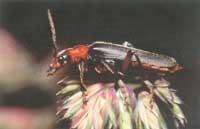
The quota has a wide geographical distribution. It incubates almost all over Europe and Asia, except in tundra and deserts. Invest in southern Africa. Its geographical distribution in Africa is not well known, but it seems that most are concentrated in Namibia and South Africa. In Euskal Herria we have a typical species in the time of Txitaldi.
As for its place of residence it does not present great demands and appears practically everywhere, except in bare mountains, very extensive forest areas, oceanic islands and very urbanized areas. However, it is conditioned by the main value required by the establishment of the habitat, that is, by the hotel use. When it comes to eating they descend to the meadows, but they do not like very extensive meadows, so the most common habitats are the forests interspersed with the simple ones.
As we mentioned, the cuckoo is a migratory bird that invests in Africa. This opened the belief that the cuckoo became a seagull in winter, as Aristotle said: “kokkus metaballei ex ierakos” and this belief is still held in several localities. On the other hand, on the occasion of this annual migration, Azkue, in the old Basque country, said that, “once a year”, it was said “from cuckoo to cuckoo”.
The trip to the South starts in the vicinity of August and adults arrive before young people. In Africa they remain until April. In spring they reach April-May, first males and then females and young ones of a year. This long journey takes place at night and in small groups. Young people of one year, in general, return to the surroundings of the place where they were born and adults also have a great fidelity to the areas of annual chiteo.
He likes beetles and caterpillars to eat, including hairy and poisonous birds. You can also eat spiders, worms, bazos, rodents, frogs and young rapes, bird eggs and chikis. Although most of the time they seek forage, solitary and placed in the viewpoints, on the ground has also been seen shaking the plants with the wings, driving away the insects and obtaining the food easily. Before ingestion, it gives hairy and poisonous herbs strong shakes to release the intestinal contents. To cope with the poisonous hairs of caterpillars, they have molded paparo, since from time to time the mucous tissues of the place move and the hairs are expelled to vomit.
The choice of the players and their relationship is not well known, but it seems that the females are equated each year with more than one male and also each year with several male. However, since the sexual ratio (ar:female ratio) of most of the populations analyzed is 1:1, no other type of equalization is ruled out. In spring, when males reach the chitaje areas, territories are fixed by songs. Then, with the arrival of the females, the songs are muffled; later, when the time of the racket approaches, we sing again. Finally, in late summer the songs are cut, although there are still days when the cuckoo moves between us.





